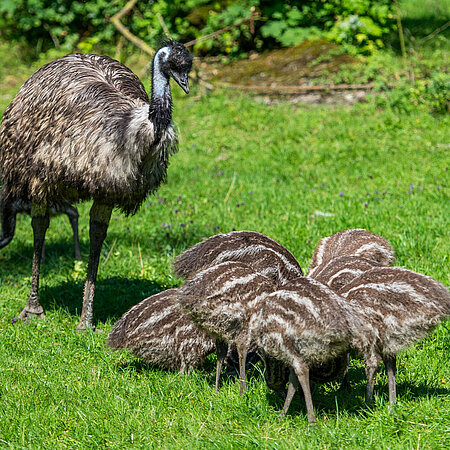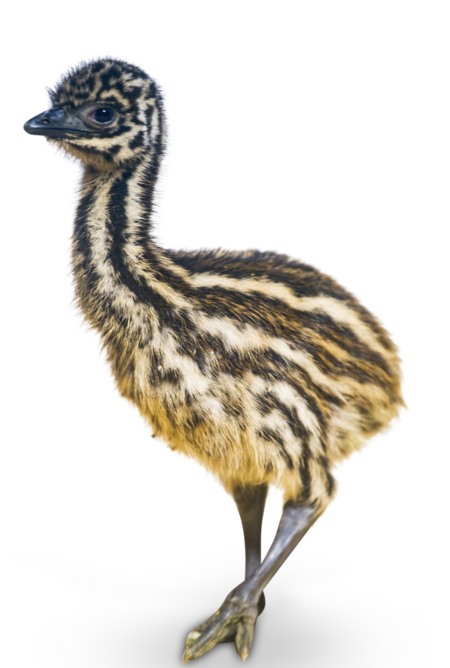Emu
Dromaius novaehollandiae

- Family
- Emus (Dromaiidae)
- Weight
- up to 50 kg
- Habitat
- Deserts, savannahs, grasslands, forests
Single father
Emu males are devoted fathers: the males alone incubate the eggs, which turn dark green during the two-month brooding period. The newly hatched chicks are able to walk shortly after birth. The father follows his young at every turn and defends them vehemently against enemies – if necessary even against their own mother. At the age of about six months, the juvenile emus are fully grown and go their separate ways.
Nomads of Australia
The emu is the second largest living bird in the world and therefore requires plenty of
food. When food in one area has been exhausted, they may form large migratory flocks, travelling long distances to reach a new food source. They follow the rain, which produces fresh seeds, fruits and young shoots to feed on. A change in the weather down under may therefore also bring with it a flock of emus.

Foraging flocks of emus often enter agricultural land in search of food, leading to conflicts with the farmers.
Distribution
